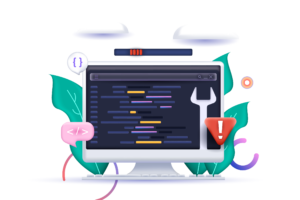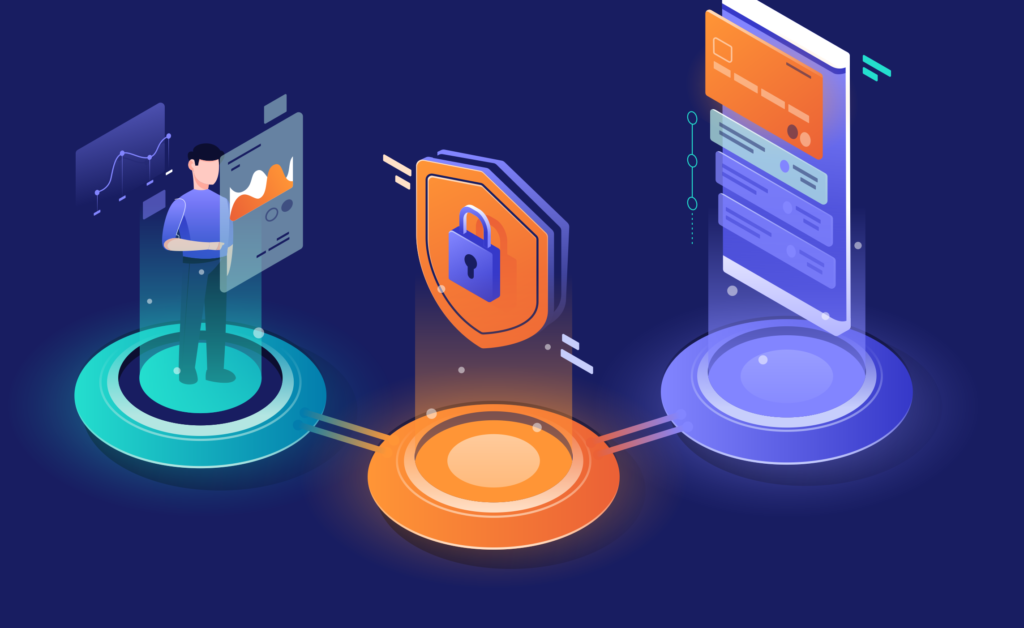It’s critical to understand how a software development organisation offers quality and approaches security before beginning any work. These software characteristics are vital to the success of your project. A single blunder can be very costly. Assume you launch an eCommerce platform, only to discover that it has some performance issues. That could cost you thousands of dollars in revenue. Alternatively, consider a clinic management solution. An EHR-related error compromises your revenue and reputation and jeopardises the lives of your patients.
This blog explains how TechDel handles quality and security. We discuss how we satisfy customers’ quality expectations, keep our promises, ensure that our products and services are safe and dependable, and conform with applicable laws, rules, regulations, and environmental policies.
We might have simplified things by highlighting a few terminologies and ISO standards that regulate crucial software development procedures. This blog will explain how we ensure high-quality, safe, and secure software development.
1. Why is software quality important?

According to research, one out of every two apps downloaded is uninstalled within 30 days. That means you have a few minutes to wow your consumers before they uninstall your app and try something else. As a result, you must give functionality and quality from the beginning.
You could count on the development team to test as they go, but that would be a waste of time. That isn’t to say they aren’t participating. After all, the quality of the code has an impact on the final output. Instead, a dedicated QA (quality assurance) staff should be added to the software engineering process.
2. Quality Guidelines for Software Development at TechDel

We develop build, staging, and production environments using CI/CD (continuous integration and continuous delivery) processes. This enables us to follow uniform project management procedures and communicate clearly. We utilise user feedback to figure out what users want, develop new product ideas, and test our assumptions. We proceed to production once an idea has been proven and functionality has been regression tested.
We never begin programming unless all project requirements, including user stories and acceptance criteria, are well specified. As a result, we prevent unexpected outcomes and ensure that all stakeholders and users are satisfied with the final product.
Software documentation should include user stories and approval criteria. They assist us:
- Set the right expectations for a product with your clients.
- Provide specific information regarding functionality and desired outcomes.
- Ensure that everyone in the team is on the same page regarding the criteria.
- Plan and estimate jobs precisely.
- Give developers and QA specialists a simple way to determine whether a feature is complete.
- Check to see if we created the right product and did so correctly.
3. Best Practices to Create Secure and High-Quality Software
3.1 Make a clear Definition of Done (DoD)

Every task, whether it’s research, documentation, auditing, refactoring, development, A/B testing, deployment, or any mixture of these, gets its definition of done (DoD). We begin work on a task only after the DoD has been clearly defined. We achieve a shared understanding of the expectations that the current iteration must meet to be delivered to users, create a transparent quality threshold, and provide software on schedule.
3.2 Adopt best coding practices.

Product quality and development processes are inextricably linked. Our developers test their code against coding standards and best practices to guarantee that everyone follows the same coding style and increases code readability, consistency, and maintainability. We also update legacy code to simplify it and clean up the codebase.
3.3 Test Early and Often

It’s critical to maintain product quality at each step and sprint. As a result, our development team collaborates with quality assurance professionals throughout the development process to ensure that the software is of the highest quality.
We double-check functionality and perform regression testing (which we’ll discuss later) before releasing code to production.
3.4 It’s crucial to communicate.

Effective communication saves time, effort, and money. TechDel believes in open communication and encourages all team members to express their thoughts and experiences, engage actively in meetings, and ask questions.
It’s also critical to record faults and concerns comprehensively and clearly and rely on user feedback loops and convert them into development tasks.
3.5 Recognize and manage risks
Software development is a complicated process that can be fraught with cost overruns, scope shifts, end-user engagement, stakeholder expectations, and more. We identify potential risks and establish solutions to be taken if those risks materialise, all while drawing on our experience and knowledge to eliminate threats to project success and minimise their impact on the project.
3.6 Consider the long run
Long-term viewpoints are critical. Before beginning a project, it’s vital to discuss the overarching concept and expectations with developers and project stakeholders and designate defined roles and duties for the entire team. Furthermore, you should consult your scaling goals with the development team to determine which scaling approach is best for your project and design the architecture such that scaling the solution is simple when the time comes.
4. Technological and Architectural Principles to Build a Secure Environment
4.1 Hosting
We apply data protection best practices during software development and infrastructure configuration to ensure that servers and user data are safe.
We primarily build apps in the cloud with Amazon Web Services (AWS), one of the most flexible and secure cloud computing platforms for sophisticated software solutions.
Since AWS is known for its security, it is used extensively in susceptible industries such as healthcare, government, and banking. AWS offers several robust security solutions to help avoid cybersecurity breaches, conduct regular penetration testing and security audits, and handle enormous traffic volumes while maintaining quick and efficient performance.
4.2 Architecture
We implement rigorous security precautions from the start because many apps deal with complicated or sensitive data, including:
- VPCs (virtual private clouds) are used to isolate data.
- Private AWS S3 buckets for confidential storage
- Private networks and network address translation (NAT) are used for network security.
- Encryption
4.3 Network
We protect our network by employing the following methods:
- Use HTTPS via SSL, SSH, and other security protocols to transport data.
- A firewall with specific rules is used to safeguard data from cybersecurity threats such as SQL injection and cross-site scripting.
- A virtual private cloud enables advanced security features such as security groups and network access control lists for inbound/outbound filtering.
4.4 Data Security
In terms of data security, we have the following advantages:
- To encrypt data at the object level, use S3 server-side encryption.
- Instance store encryption is used to encrypt data that changes often but isn’t encrypted by default (for example, buffers, caches, and scratch data)
5. Steps to Consider Improving Software Quality through Security
5.1 Enforce the use of consistent coding standards.
The coding style guide should be language-specific and address file naming conventions, non-ASCII character representation, and wild card imports. Also, don’t add any rules that don’t help with consistency, reliability, upkeep, or security.
5.2 Make use of automated testing software.

This involves using analysis tools like FxCop, Check style, and JUnit to check code in the integrated development environment.
5.3 Create and share modules for everyday tasks like user input validation.
Write, manage, and share libraries for performing everyday activities, especially those difficult to get right, such as name and phone number input validation.
5.4 Use code reviews as a resource.
Peer reviews can detect more than half of all errors, aid in enforcing consistent coding standards, and act as a tool for education and experience.
5.5 Include security-related requirements and test cases from the beginning
Instead of being classified as non-functional requirements, organise security requirements like input validation as functional requirements. Create use cases for what you want, misuse instances for what you don’t want, and abuse cases for what you don’t want to happen (what an attacker could do). Instead, blocklists include allowlists (what’s permitted) and (what is not allowed). Use approved encryption for data-at-rest and data-in-transit. Don’t trust anyone or anything unless it’s been validated.
6. Conclusion
“Poor code equals vulnerable code” should be the watchword for software engineers. To underline that increasing the quality and security of software is a protracted process that should be undertaken gradually and deliberately.
We hope you’ve gained a better understanding of how we maintain quality and security due to this guide. Don’t hesitate to Contact Us if you have any unresolved questions or would like to employ a software development team.


